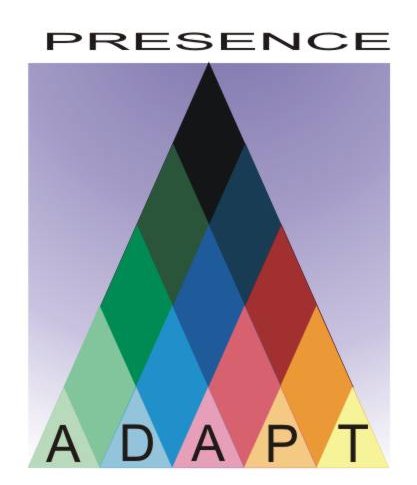
 |
Summary |
The sense of presence arises from the perception of the relationship between our body and the environment and originates from our senses as well as from our past experiences. The main objective of ADAPT will be to study how the perception of self in the environment emerges during the early stages of human development and to implement an artificial instance of such developmental processes in an embodied artifact. In particular we propose to investigate the process of building a coherent representation of visual, auditory, haptic sensations. To achieve this a twofold strategy is pursued. On one side we aim to realize an artificial system capable of building internal representations. On the other side we will investigate when and how the developing brain starts to produce a unique experience-based repertoire of intentional percepts and actions.
The main objective of ADAPT is to study the process of building a coherent representation of visual, auditory, haptic sensations and how this representation can be used to describe/elicit the sense of presence. The goal is the 'understanding' of representation in humans and machines. We intend to pursue this in the framework of development e.g. by studying the problem from the point of view of a developing system. Within this framework we will use two methodologies: on one side we will investigate the mechanisms used by the brain to learn and build this unified representation by studying and performing experiments with human infants; on the other side we intend to use artificial systems (e.g. robots) as models and demonstrators of perception-action representation theories.
We will employ a synthetic methodology (e.g. a methodology of 'understanding by building') which consists of three parts or steps: i) modeling aspects of a biological system; ii) abstracting general principles of intelligent behavior from this model; iii) apply these principles to the design of intelligent artifacts.
These steps are not performed in sequence but rather in parallel and iteratively.
The work will be organized along 4 main lines (corresponding to the 4 technical work packages of the project): 1) study and propose a theory of presence from a multidisciplinary perspective spanning cognition, perception and robotics; 2) study the sense of presence with the framework of embodiment and body morphology; 3) study how the perception of self evolves during the early stages of human development; 4) implement an artificial instance of such developmental process in an embodied artifact as a synthetic model and demonstrator.
Project details
Project Reference: IST-2001-37173
Contract Type: Cost-sharing contracts
Start Date: 2002-10-01
End Date: 2005-09-30
Duration: 36 months
Project Status: Execution